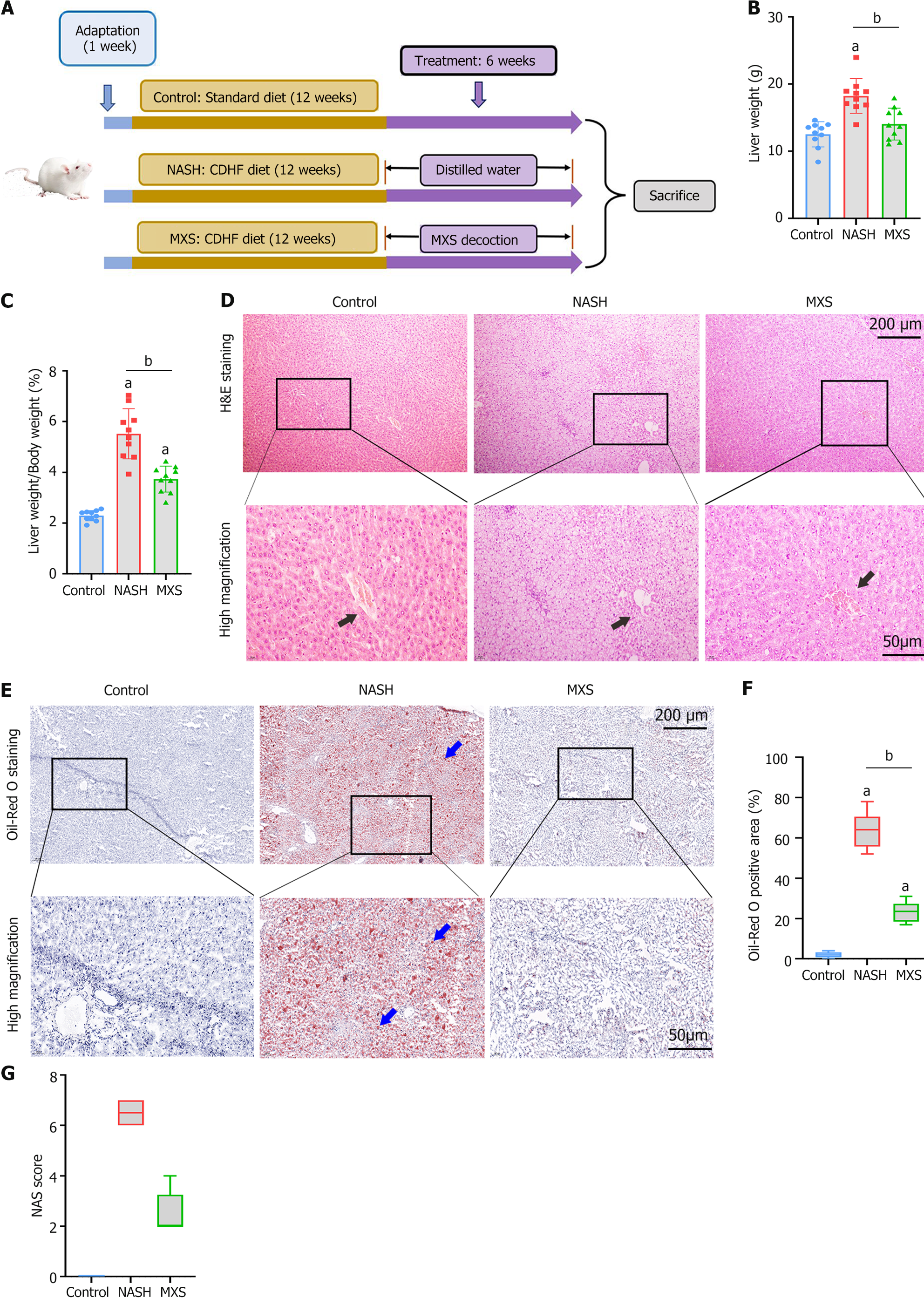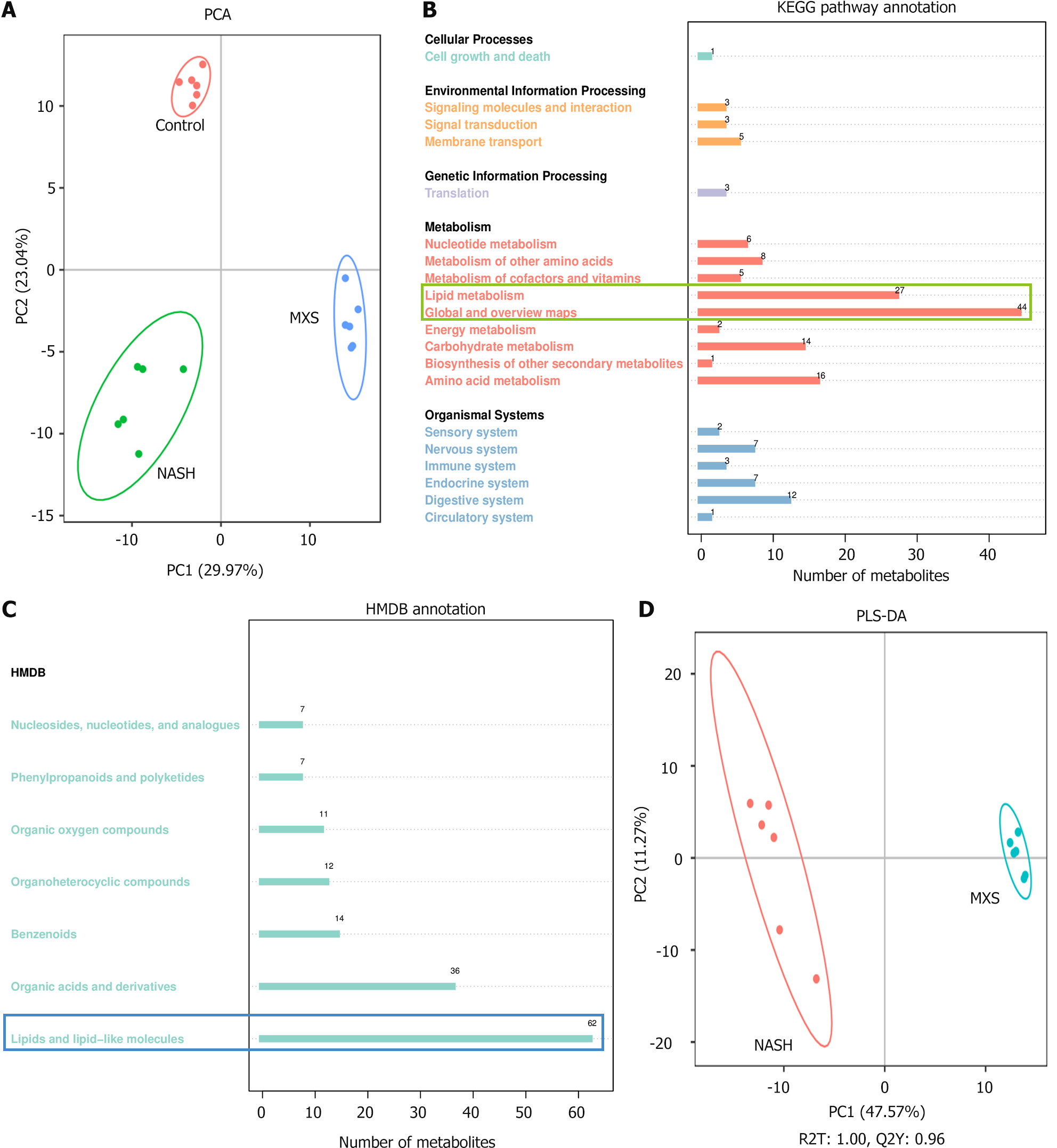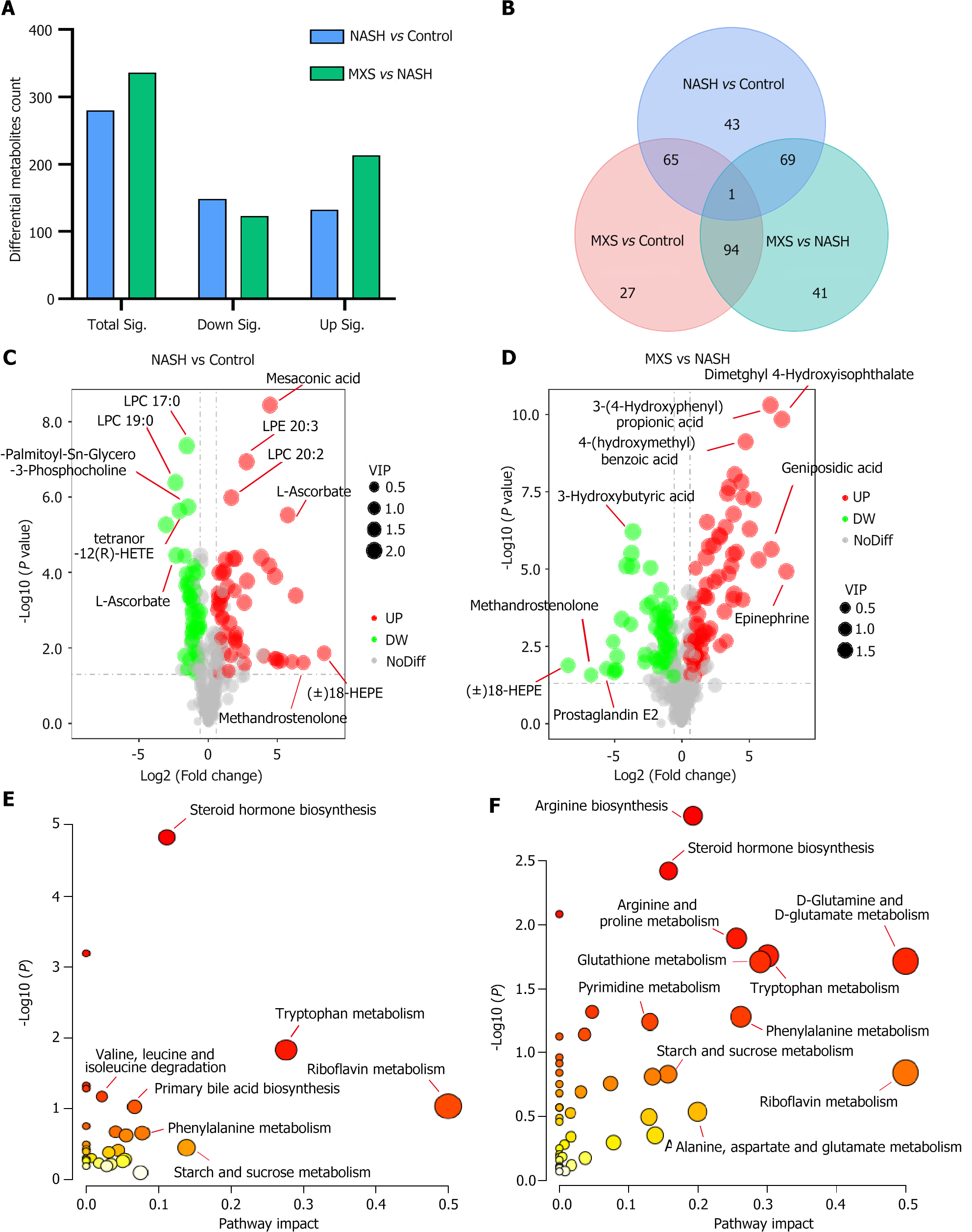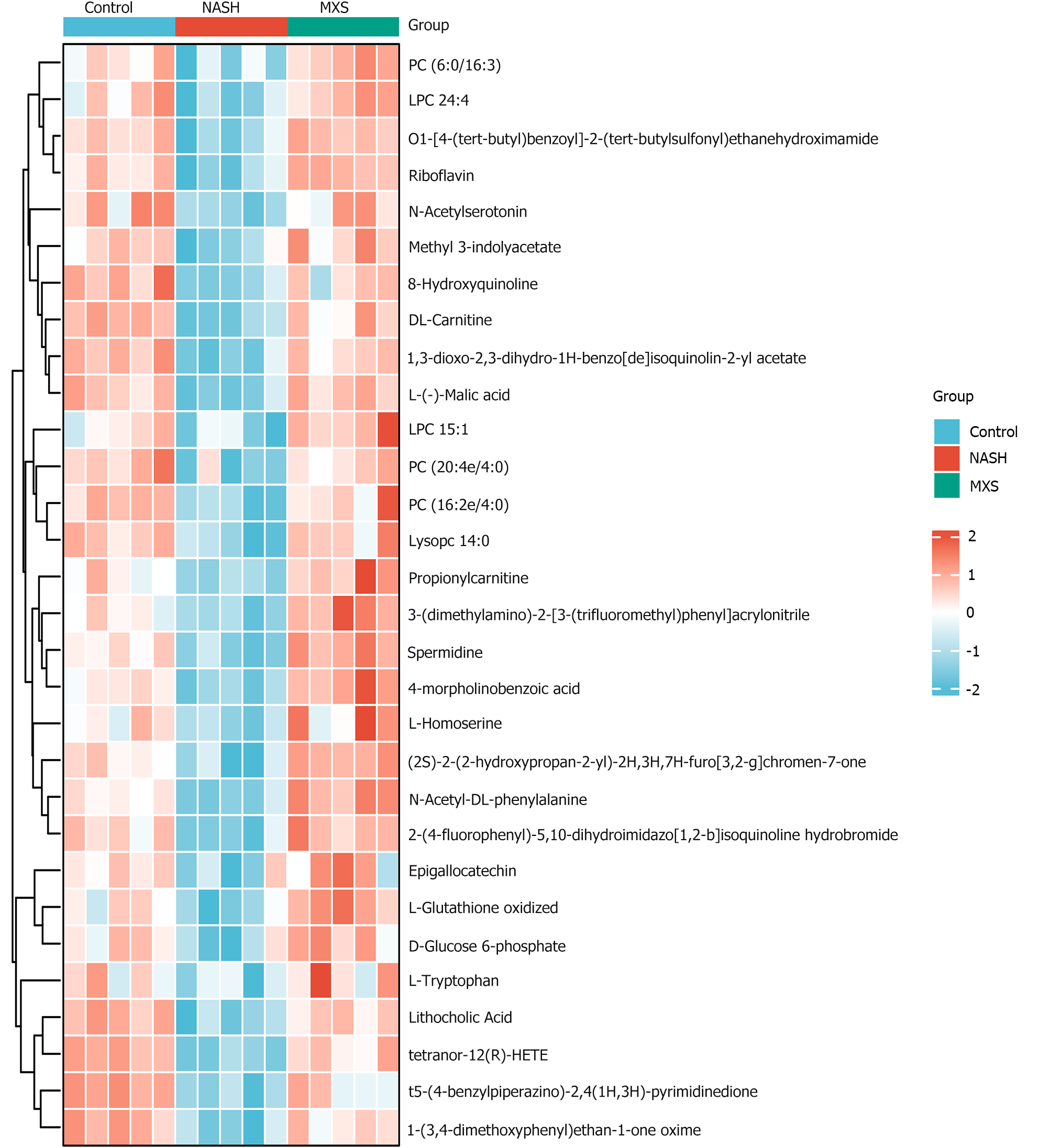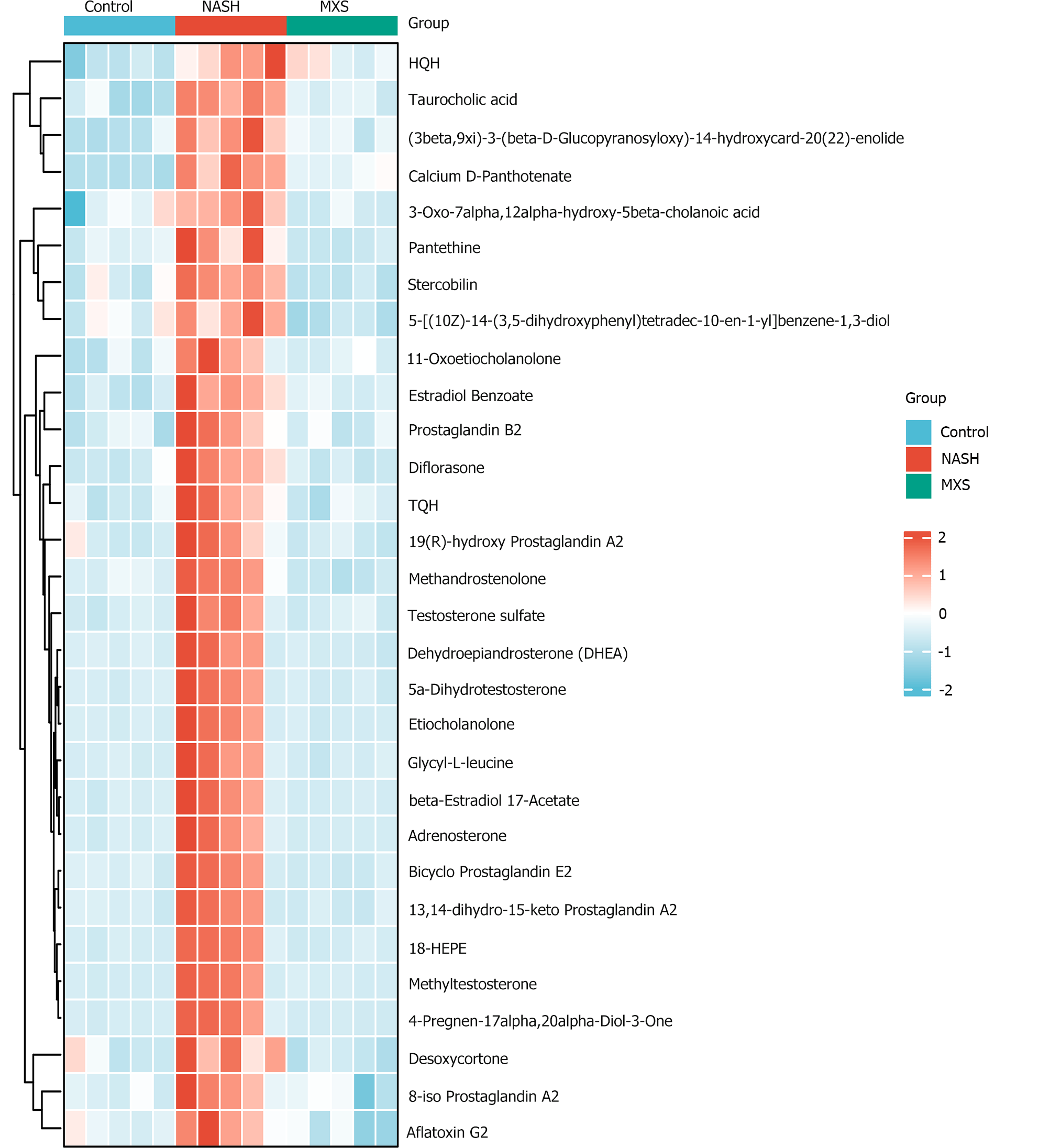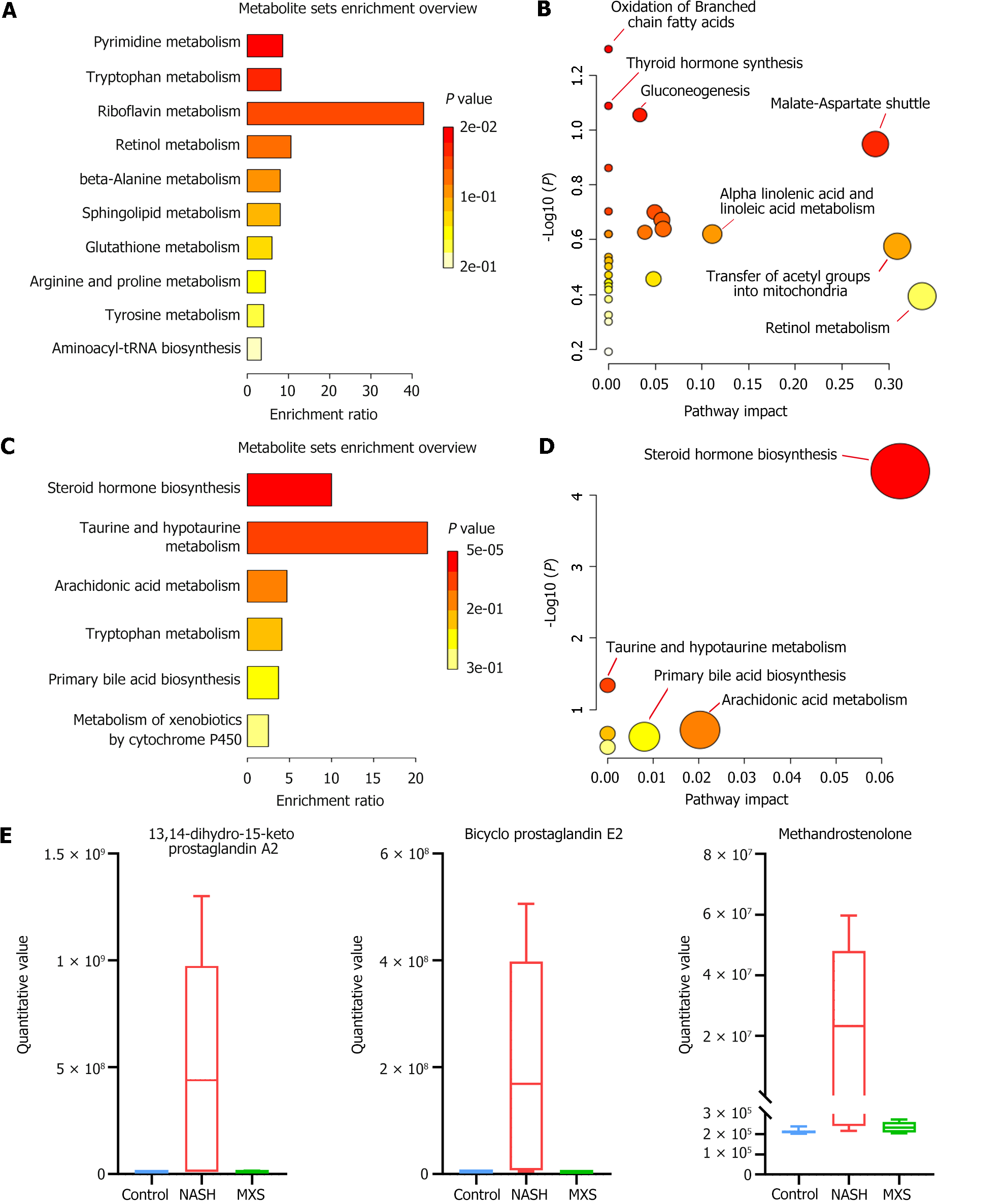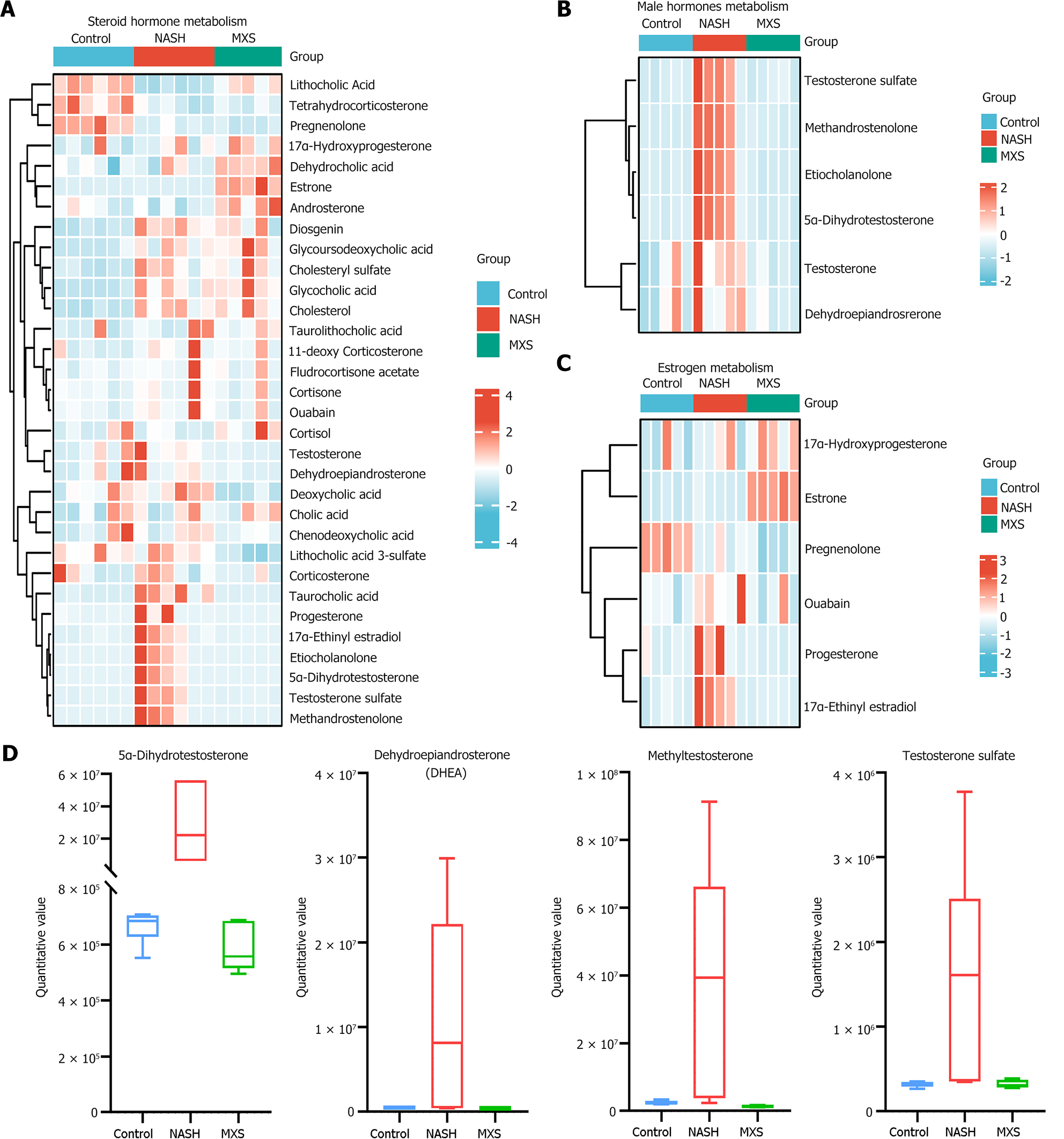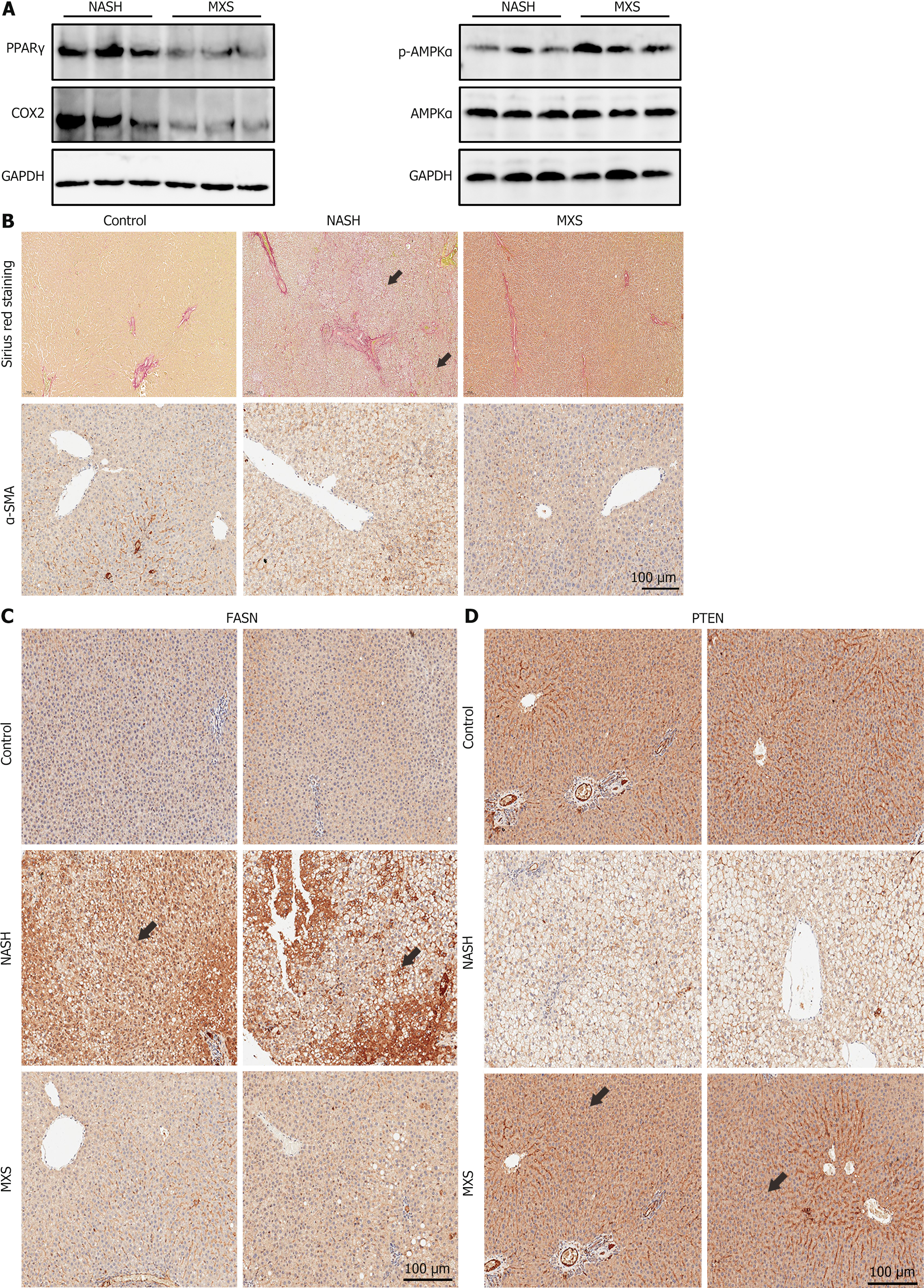Copyright
©The Author(s) 2024.
World J Hepatol. Jul 27, 2024; 16(7): 1051-1066
Published online Jul 27, 2024. doi: 10.4254/wjh.v16.i7.1051
Published online Jul 27, 2024. doi: 10.4254/wjh.v16.i7.1051
Figure 1 Modified Xiaoyao San demonstrated its capacity to alleviate inflammation and hepatic steatosis in rats subjected to a choline-deficient/high-fat diet.
A: The diagram illustrating the experimental procedure outlined the systematic investigation of the protective role of modified Xiaoyao San (MXS) in rats following a 12-week choline-deficient/high-fat (CDHF) diet regimen. Starting at week 13, rats that had been fed the CDHF diet received daily intragastric administration of either saline or MXS decoction for a duration of 6 weeks; B and C: The liver weight and liver/body weight ratio of the rat groups were presented; D and E: The images from hepatic sections were stained with hematoxylin and eosin and Oil Red O (ORO). Black arrows indicate the liver portal areas. The lipid droplets (indicated by blue arrows) in the tissue are orange-red and the nuclei are blue; F and G: Quantitative data pertaining to ORO-positive areas and the nonalcoholic fatty liver disease activity score for each group were displayed. Data were presented as mean ± standard error of mean (n = 10/group), and were analyzed by ANOVA. aP < 0.05 Control vs nonalcoholic steatohepatitis (NASH) group. bP < 0.05 NASH vs MXS group. MXS: Modified Xiaoyao San; NASH: Nonalcoholic steatohepatitis.
Figure 2 Significant changes in metabolites after modified Xiaoyao San treatment were mainly related to lipid metabolism.
A: Principal component analysis score map of each group; B: Gene ontology enrichment analyses; C: Human Metabolome Database classification notes; D: Partial least squares discrimination analysis between nonalcoholic steatohepatitis and modified Xiaoyao San groups. The scores of the first-ranked principal component (PC1, horizontal) and the second-ranked principal component (PC2, vertical) were used to represent the data. Samples from various experimental cohorts were represented by differently colored scatter plots, while 95% confidence intervals were visually depicted using ellipses. PCA: Principal component analysis; PLS-DA: Partial least squares discrimination analysis; HMDB: Human Metabolome Database; MXS: Modified Xiaoyao San; NASH: Nonalcoholic steatohepatitis.
Figure 3 Steroid hormone synthesis was the primary target pathway affected by modified Xiaoyao San treatment.
A: Statistical analysis of differential metabolites. Total Sig denoted the total count of metabolites that exhibited significant changes. Down/up Sig represented the overall number of metabolites that underwent significant downregulation or upregulation; B: A Venn diagram illustrated the comparative analysis of metabolites among the three groups; C and D: Volcano plots displayed significantly changed metabolites, indicated by red and blue-colored dots. The criteria for significance were fold change (FC) below than 0.667, FC greater than 1.5, or variable importance in the projection greater than 1.0, and P value below than 0.05; E and F: Pathway enrichment analysis of differential metabolites in different comparisons. The pathway impact value (X-axis) was denoted by the size of the circles, and the -log10 P value weight (ranging from white to red, Y-axis) was indicated by the color intensity. MXS: Modified Xiaoyao San; NASH: Nonalcoholic steatohepatitis.
Figure 4 Heatmap of the top 30 metabolites that decreased in the nonalcoholic steatohepatitis model group but recovered or increased after modified Xiaoyao San treatment.
MXS: Modified Xiaoyao San; NASH: Nonalcoholic steatohepatitis.
Figure 5 Heatmap depicted the 30 most prominent metabolites that unusually increased in the nonalcoholic steatohepatitis model group but recovered or downregulated after modified Xiaoyao San treatment.
MXS: Modified Xiaoyao San; NASH: Nonalcoholic steatohepatitis.
Figure 6 Modified Xiaoyao San inhibited steroid synthesis and inflammation-related metabolic pathways.
A and B: Metabolite set enrichment and pathway analysis of the 30 identified metabolites that decreased in the nonalcoholic steatohepatitis (NASH) model group but recovered or increased after modified Xiaoyao San (MXS) treatment; C and D: Metabolite set enrichment and pathway analysis of the 30 identified metabolites that unusually increased in the NASH model group but recovered or were downregulated after MXS treatment; E: Histogram of the top 3 metabolites related to steroid hormones and the inflammation process. MXS: Modified Xiaoyao San; NASH: Nonalcoholic steatohepatitis.
Figure 7 Metabolites related to male hormones were the primary targets influenced by modified Xiaoyao San.
A: Heatmap of metabolites related to steroid hormone metabolism; B and C: Heatmaps of metabolites related to male hormones and estrogen metabolism; D: Histogram of the top 4 metabolites related to male hormones metabolism. MXS: Modified Xiaoyao San; NASH: Nonalcoholic steatohepatitis.
Figure 8 Modified Xiaoyao San treatment regulated the signaling pathways and factors related to inflammation and lipid metabolism.
A: In hepatic tissues, PPARγ and COX2 expressions were decreased by modified Xiaoyao San (MXS) treatment and MXS also activated the AMPK signaling; B: MXS treatment attenuated hepatic fibrosis and α-SMA expression. Collagen fibers appear red (black arrows) under normal light microscopy and other tissue components were dyed yellow; C: The MXS treatment inhibited the levels of FASN in liver tissues; D: The PTEN expression in liver tissues was restored after MXS treatment (immunohistochemistry detection reagents yielding a brown reaction product, indicated by black arrows). The brown portion is the portion of the antigen that expresses coloration. MXS: Modified Xiaoyao San; NASH: Nonalcoholic steatohepatitis.
- Citation: Mei XL, Wu SY, Wu SL, Luo XL, Huang SX, Liu R, Qiang Z. Hepatoprotective effects of Xiaoyao San formula on hepatic steatosis and inflammation via regulating the sex hormones metabolism. World J Hepatol 2024; 16(7): 1051-1066
- URL: https://www.wjgnet.com/1948-5182/full/v16/i7/1051.htm
- DOI: https://dx.doi.org/10.4254/wjh.v16.i7.1051









